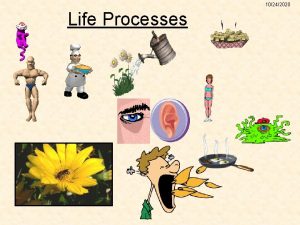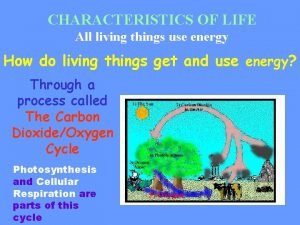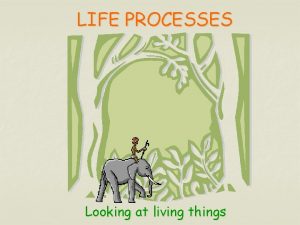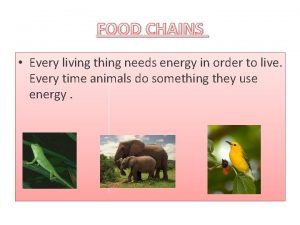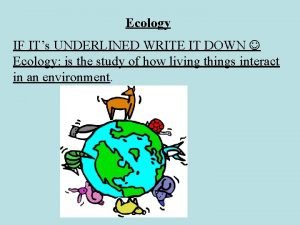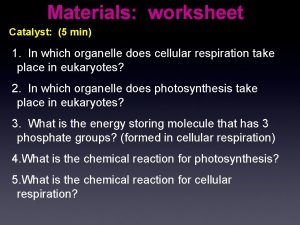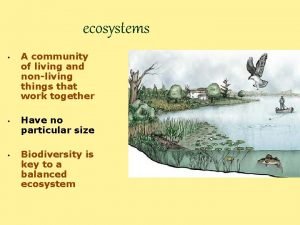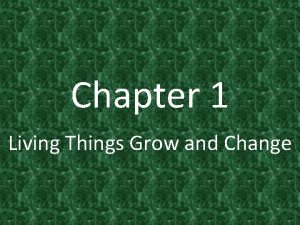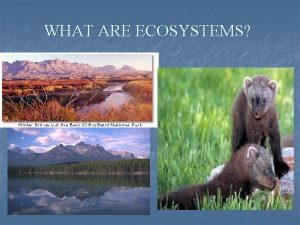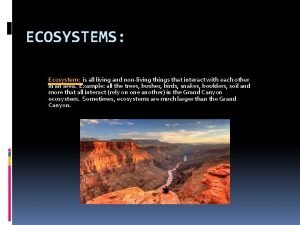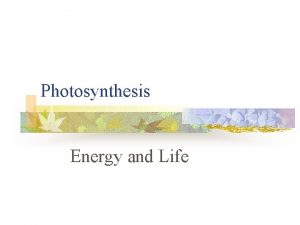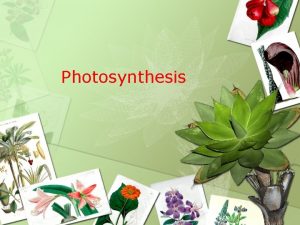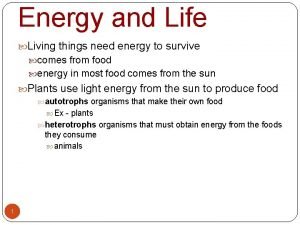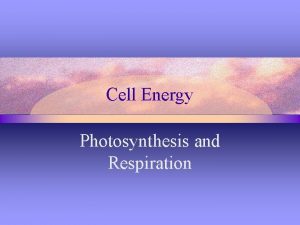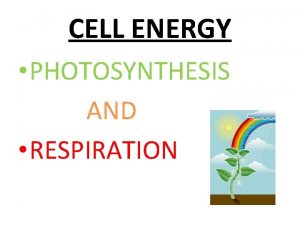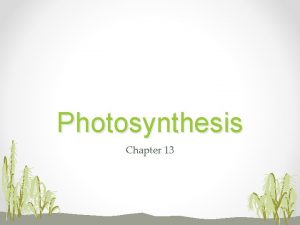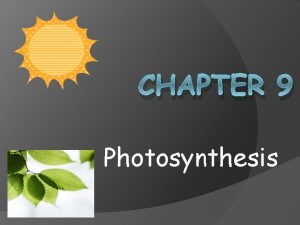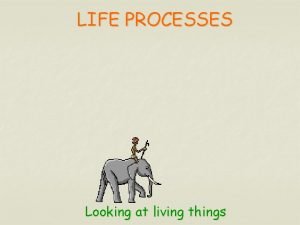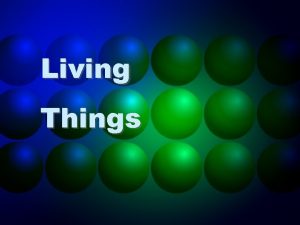Photosynthesis Energy and Life Living things need energy




















- Slides: 20

Photosynthesis

Energy and Life • Living things need energy to survive. • This energy comes from food. The energy in most food comes from the sun.

Autotrophs and Heterotrophs • Plants and some other types of organisms are able to use light energy from the sun to produce food. • Autotrophs – Make their own food – plants • Heterotrophs – Obtain energy from the foods they consume – animals

Chemical Energy and ATP • Energy comes in many forms including light, heat, and electricity. • Energy can be stored in chemical compounds. • An important chemical compound that cells use to store and release energy is adenosine triphosphate, abbreviated ATP. • ATP is used by all types of cells as their basic energy source.

ATP • ATP consists of: – adenine – ribose (a 5 -carbon sugar) – 3 phosphate groups Phosphate groups adenine Sugar

ATP and Energy • Releasing Energy – Energy stored in ATP is released by breaking the chemical bond between the second and third phosphates.

Role of ATP • The energy from ATP is needed for many cellular activities, including active transport across cell membranes, protein synthesis and muscle contraction.

Check for Understanding • With your partner, discuss the following questions: – What does ATP stand for? – How is energy released from ATP? – What is the energy released from ATP used for?

Photosynthesis • Photosynthesis is the process in which green plants use the energy of sunlight to convert water and carbon dioxide into highenergy carbohydrates and oxygen.

Photosynthesis • The equation for photosynthesis is: 6 CO 2 + 6 H 2 O + energy carbon dioxide + water + sunlight C 6 H 12 O 6 + 6 O 2 sugars + oxygen • Photosynthesis uses the energy of sunlight to convert water and carbon dioxide into highenergy sugars and oxygen.


Light and Pigments • In addition to water and carbon dioxide, photosynthesis requires light and chlorophyll. • Plants gather the sun's energy with lightabsorbing molecules called pigments. – The main pigment in plants is chlorophyll. – There are two main types of chlorophyll: • chlorophyll a • chlorophyll b

Light and pigments • Light is a form of energy, so any compound that absorbs light also absorbs energy from that light. • When chlorophyll absorbs light, much of the energy is transferred directly to electrons in the chlorophyll molecule, raising the energy levels of these electrons. • These high-energy electrons are what make photosynthesis work.

Check for Understanding • Answer the following questions with your partner: – What is the equation for photosynthesis? – What is photosynthesis? – What are pigments and how are they used in photosynthesis? – CRITICAL THINKING: What happens to the pigments during the fall that causes the color of leaves to change?

Chloroplast • Site of photosynthesis • Chloroplasts contain thylakoids—saclike photosynthetic membranes. • A stack of thylakoids is called a granum Granum

Reactions of Photosynthesis • Light-Dependent Reactions – The light-dependent reactions require light. – The light-dependent reactions produce oxygen gas and convert ADP and NADP+ into the energy carriers ATP and NADPH. • NADP+ is an electron carrier that transports high energy electrons from the light reaction to the Calvin Cycle

Reaction of Photosynthesis • The Calvin cycle uses ATP and NADPH from the light-dependent reactions to produce highenergy sugars. • Because the Calvin cycle does not require light, these reactions are also called the lightindependent reactions.

Check for Understanding • With your partner discuss the following question: – Compare and contrast the light dependent and light independent reactions. Make a note of how they are interconnected how does the one process make the other process possible?

Reaction of Photosynthesis • The two sets of photosynthetic reactions work together. – The light-dependent reactions trap sunlight energy in chemical form. – The light-independent reactions use that chemical energy to produce stable, high-energy sugars from carbon dioxide and water.

Reaction of Photosynthesis
 Pyramid hesd
Pyramid hesd What is the smallest living unit in the body
What is the smallest living unit in the body All living things have seven life processes
All living things have seven life processes Life processes of living things
Life processes of living things Life cycle of all living things
Life cycle of all living things The seven life processes of living things
The seven life processes of living things Food chain begins with
Food chain begins with What are the producers in a food web
What are the producers in a food web Gets its energy from eating living things
Gets its energy from eating living things How living things obtain energy worksheet answers
How living things obtain energy worksheet answers Explain how adp and atp are each like a battery
Explain how adp and atp are each like a battery Photosynthesis glossary
Photosynthesis glossary Chemical formula for cellular respiration
Chemical formula for cellular respiration Photosynthesis transforms light energy into chemical energy
Photosynthesis transforms light energy into chemical energy Ecosystem living and nonliving things
Ecosystem living and nonliving things What is a community of living and nonliving things
What is a community of living and nonliving things Which part of the plant carries and protects the seed
Which part of the plant carries and protects the seed Unicellular and multi cellular
Unicellular and multi cellular Living things grow and change
Living things grow and change Non living things in grasslands
Non living things in grasslands Things in ecosystem
Things in ecosystem



